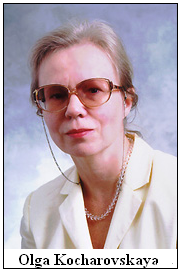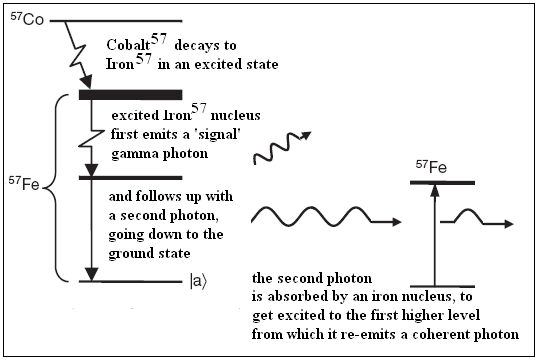The nucleus of the atom has been pressed into service to improve quantum communication, says S.Ananthanarayanan.
The counter-intuitive ways of nature at small dimension hold out a promise of near-magical computing speeds and messaging with fool-proof security. On the one hand, sub-atomic dimensions can be measured, even in theory, only approximately and the outcome of interactions can be any one of a brace of possibilities. This allows a sub-atomic particle to be in ‘many states at once’ and different computations can hence be carried out ‘at the same time’. On the other hand, a measurement on one of a pair of that share a combined state, known as ‘coherent particles’, affects the other particle even if it is at a distance away. This property makes it possible to watch one of the pair, to know if a message sent via the other particle has been compromised.
But all these processes call for information to be passed on, in the form of a photon, or a particle of light, which carries with it the secret of its internal state. And for the photon to be used over a reasonable distance, there is need boost or renew photons along the way, in a way that does not affect their delicate, uncommitted internal state. The method of doing this has been by letting the photon be absorbed by an atom, which re-emits the photon without a change. But this device has been possible so far with the external, electron energy states of the atom, and these energies correspond to low energy photons, like visible light or infra-red light.
Farit Vagizov, Vladimir Antonov, Y. V. Radeonychev, R. N. Shakhmuratov and Olga Kocharovskaya, at Texas, USA and at Kazan and Nizhny Novgorod, Russia report in the journal, Nature, that they have succeeded in the absorption and coherent emission of a high energy, gamma ray photon by the nucleus of iron atoms. Low energy radiation, like visible or IR, has a number of limitations for use in quantum communication, which high energy radiation does not. Using gamma ray photons in place of low energy radiation would thus expand the field of applications.

A first limitation of low energy radiation is that it is often not detected, or that false detection is provoked by some outside disturbance. This limitation could be likened to communicating in whispers. The second limitation is that low energy radiation has large wavelength. Longer waves need larger optical scattering and detection devices and this limits how small the electronics can get. Next, low energy radiation is easily stopped by most materials and only special materials that are transparent to such radiation can be used. And finally, a low energy radiation channel has low frequency and cannot code a large amount of information.
High energy radiation, like gamma rays, on the other hand, is always detected and chance disturbances cannot lead to false detection. Next, gamma rays have short wavelength and devices can be miniature, currently nano-meter and potentially much smaller. Third, gamma rays are penetrative and can pass through many materials. And finally, gamma ray photon channels are high frequency channels and can carry large quantities of information.
But the carriers of quantum information used so far have been in the low energy region because lasers were first developed in the microwave, and later in the IR or the visible region and atomic transitions that lead to absorption or emission of light are also in this energy region. The best that can be done with atomic transitions is to tap transitions between different electron shells in atoms, which correspond to X Rays. And this region has not been suitable because devices typically need to be kept at very low temperatures to be used.
But the scene has been changing, with the use of suitable radioactive sources of gamma rays or even laser-like sources, which create high energy radiation of specific frequencies by moving electrons along a rapidly undulating path. But for detection or manipulation of gamma rays, electron transitions cannot be used, it has to be transitions between energy levels inside the atomic nucleus. Just as the atom is modeled as series of shells of electrons, the protons and neutrons that make up the nucleus also have energy levels that can be grouped into shells. But the energies separating these levels are high and correspond to gamma rays. A gamma ray photon could thus be absorbed by an atomic nucleus, with the nucleus getting pumped up to a higher energy level, followed by emission of the same photon, in the act of de-exciting.

The authors of the paper note that using nuclear transitions has other advantages. The energy differences, for one, are more exact, because the nucleus has less recoil. There are also good sources of single gamma ray photons, in the form of radioactive nuclei that decay relatively slowly. In fact, in some forms of two-step decay of the source, the first emission acts as a signal to say that the second emission is about to take place.
Olga Kocharovskaya, of Texas A&M University and her team arranged for gamma radiation from cobalt nuclei to be absorbed and re-emitted by iron nuclei in a sheet of iron foil. By setting the sheet vibrating, the absorption of the gamma ray photon can take place at different distances from the source. As the arrival of the source gamma ray photon is heralded by a first emission, it is possible to manipulate the vibration of the sheet, and hence control the exact moment of absorption and also a spreading out of the frequency, depending on whether the iron sheet was moving towards the photon or away from it.
The result is sensitive control, based on the extent and speed of vibration of the sheet, of the timing and the spectral spread of emitted gamma photons. The movement of the sheet, in fact, gets superimposed on the photons, which helps create a series of evenly spaced, coherent pulses, control of the shape and duration of the pulses and even pairs of emitted photons. The technique is thus implementation in the gamma region of methods that have been developed for visible and lower energy radiation, which brings with it the advantages of working with higher energies.
' ------------------------------------------------------------------------------------------